
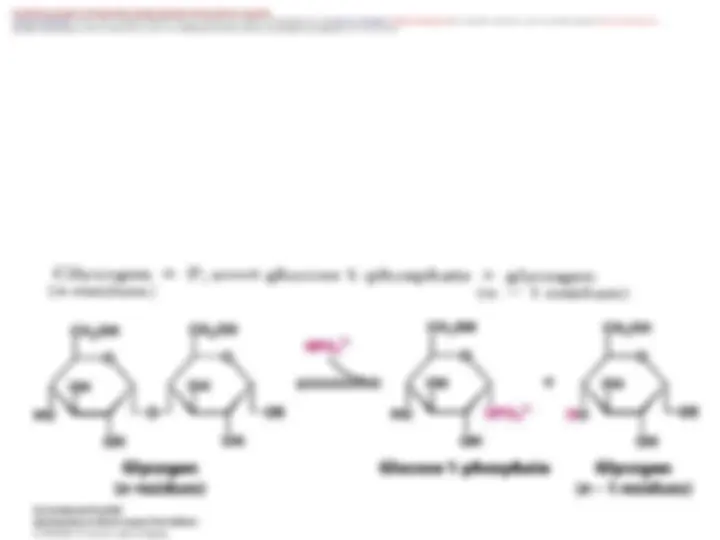
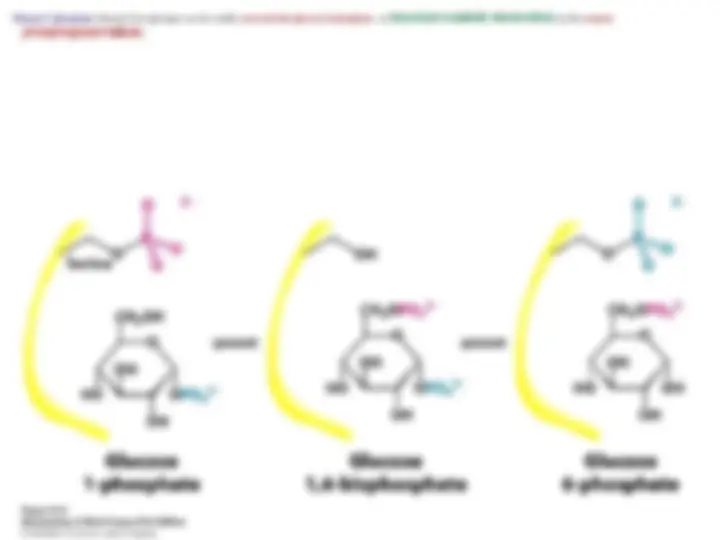
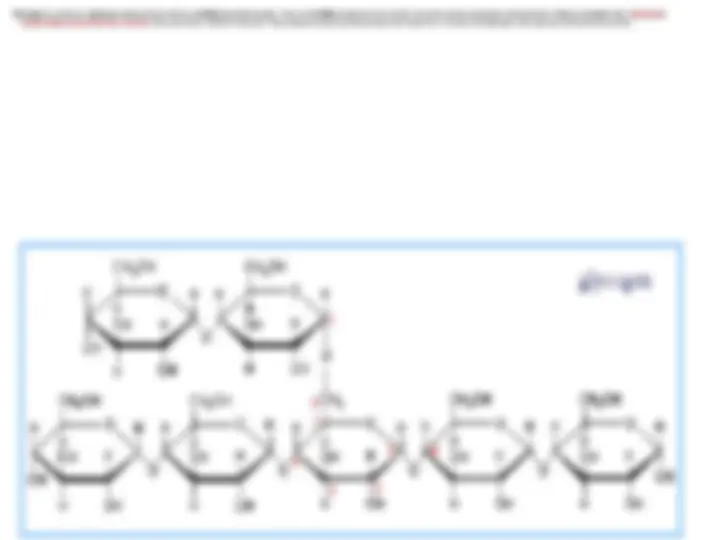
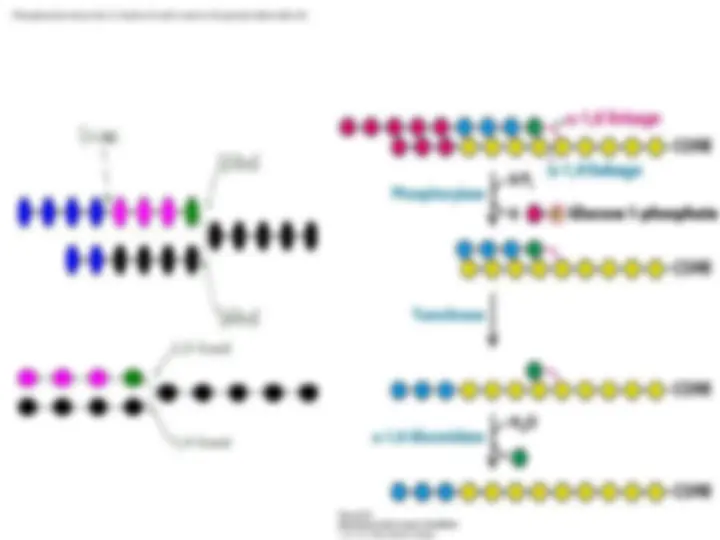
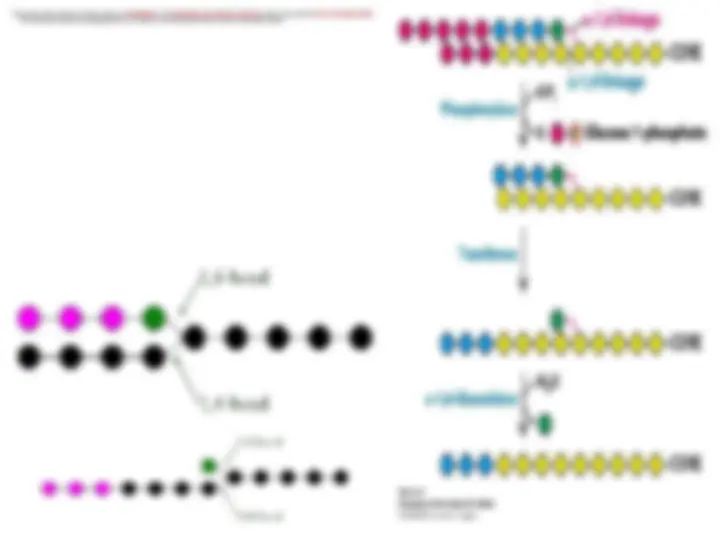
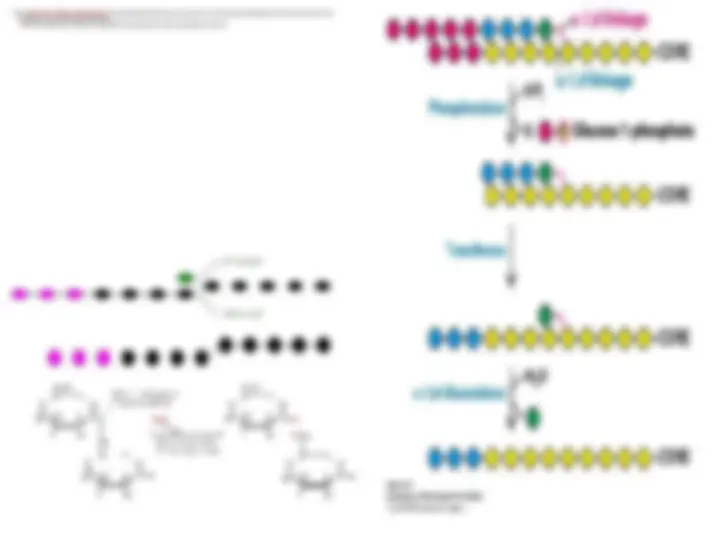
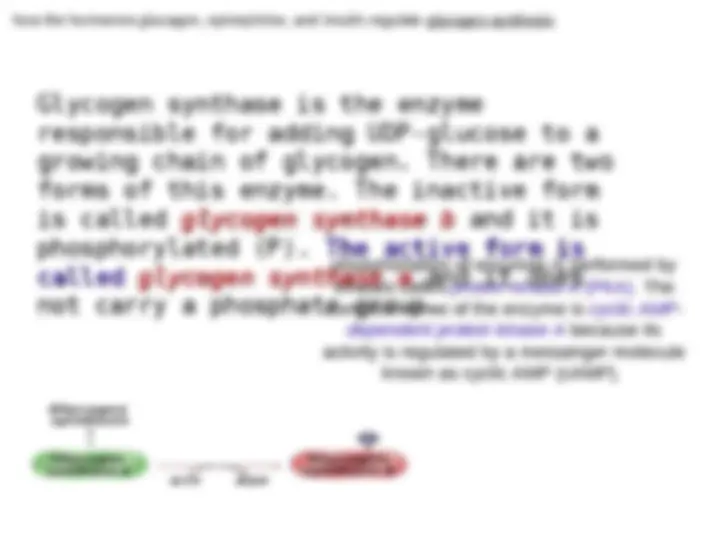
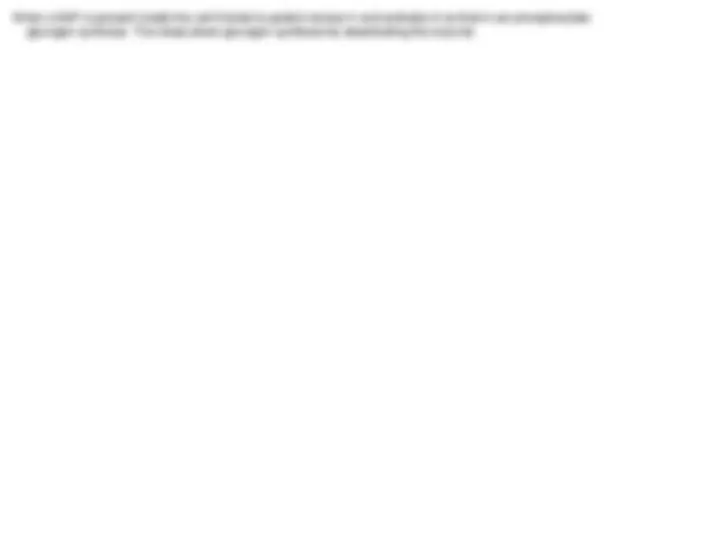
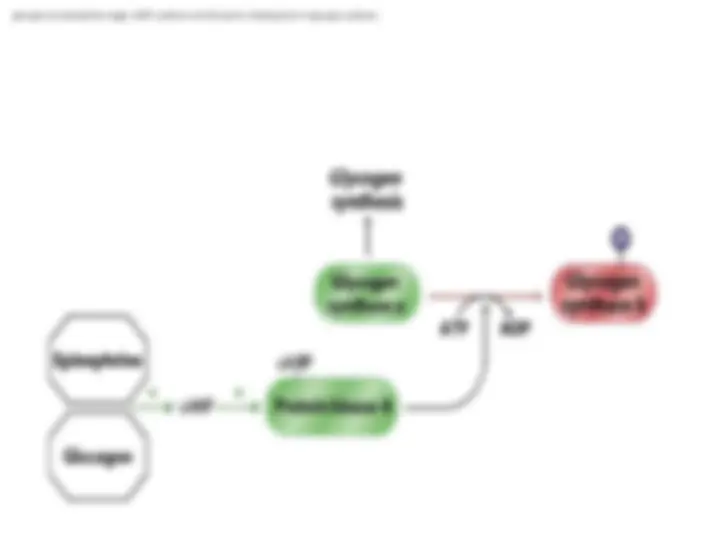
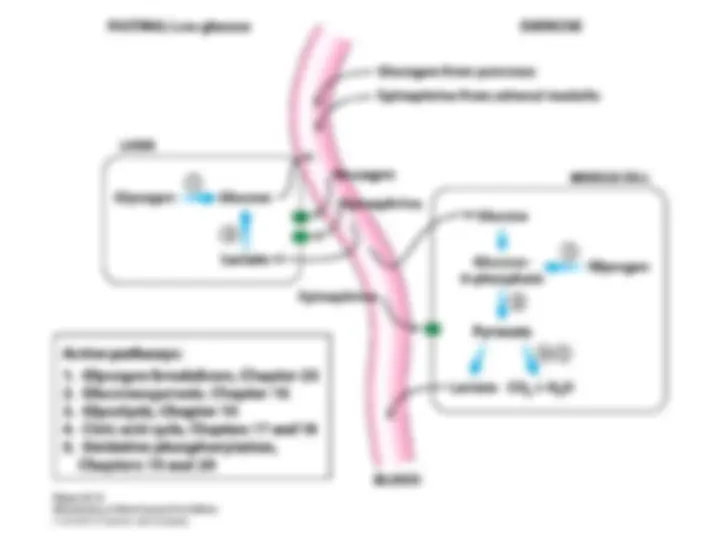
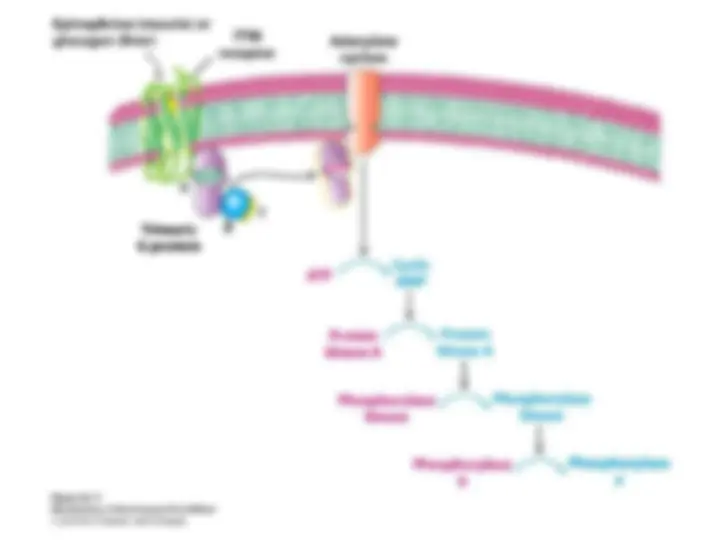


Study with the several resources on Docsity

Earn points by helping other students or get them with a premium plan


Prepare for your exams
Study with the several resources on Docsity

Earn points to download
Earn points by helping other students or get them with a premium plan
Community
Ask the community for help and clear up your study doubts
Discover the best universities in your country according to Docsity users
Free resources
Download our free guides on studying techniques, anxiety management strategies, and thesis advice from Docsity tutors
An in-depth look into the process of glycogen degradation, focusing on the interplay of three key enzymes: glycogen phosphorylase, transferase, and debranching enzyme. How these enzymes work together to convert glycogen into glucose 6-phosphate, which can enter the metabolic pathway of glycolysis.
Typology: Study notes
1 / 19

This page cannot be seen from the preview
Don't miss anything!












Glycogen Breakdown Requires the Interplay of Several EnzymesGlycogen Breakdown Requires the Interplay of Several Enzymes
The efficient breakdown of glycogen to provideThe efficient breakdown of glycogen to provide glucose 6-phosphateglucose 6-phosphate for further metabolism requiresfor further metabolism requires different enzyme activitiesdifferent enzyme activities::
one toone to degrade glycogendegrade glycogen,,
two totwo to remodel glycogenremodel glycogen so that it remains a substrate for degradation,so that it remains a substrate for degradation,
and one toand one to convert the product of glycogenconvert the product of glycogen breakdown into a form suitable for further metabolism.breakdown into a form suitable for further metabolism.
Glycogen
Glycogen is a polymer of
is a polymer of glucose
glucose residues linked mainly by
residues linked mainly by a(1 �4)4)
a(1 �4)4) glycosidic linkages. There are
glycosidic linkages. There are a(1 �4)6)
a(1 �4)6) linkages at branch points. Glucose is stored as glycogen predominantly in
linkages at branch points. Glucose is stored as glycogen predominantly in liver
liver and
and muscle
muscle cells.
cells. The enzyme
The enzyme
phosphorylase cannot break the 1.6 bonds
phosphorylase cannot break the 1.6 bonds
. Here some other method is necessary. What happens is that the phosphorylase first breaks the 1.4 bonds of the glycogen until 4 glucose units before the junction. . Here some other method is necessary. What happens is that the phosphorylase first breaks the 1.4 bonds of the glycogen until 4 glucose units before the junction.
The enzymeThe enzyme phosphorylase cannot break the 1.6 bonds.phosphorylase cannot break the 1.6 bonds. Here some other method is necessary. What happens is that the phosphorylaseHere some other method is necessary. What happens is that the phosphorylase first breaks the 1.4 bonds of the glycogen until 4 glucose units before the junction.first breaks the 1.4 bonds of the glycogen until 4 glucose units before the junction.
Now a
Now a third enzyme (alpha 1,6-glucosidase
third enzyme (alpha 1,6-glucosidase also called debranching enzyme) can break the 1.6 bond (the green ball get off). This does the enzyme by to
also called debranching enzyme) can break the 1.6 bond (the green ball get off). This does the enzyme by to
hydrolyse the 1.6 bond (break using water).hydrolyse the 1.6 bond (break using water).
Hereby arises glucose (no glucose-1-phosphate) and a glycogen molecule with a glucose unit less.Hereby arises glucose (no glucose-1-phosphate) and a glycogen molecule with a glucose unit less.
The glucose-6-phosphate product may enter Glycolysis or (mainly in liver) be dephosphorylated for release to
the blood.
phosphorlation of enzymes is performed by
kinases called protein kinase A (PKA). The
complete name of the enzyme is cyclic AMP-
dependent protein kinase A because its
activity is regulated by a messenger molecule
known as cyclic AMP (cAMP).
how the hormones glucagon, epinephrine, and insulin regulate glycogen synthesis
Glycogen synthase is the enzyme
Glycogen synthase is the enzyme
responsible for adding UDP-glucose to a
responsible for adding UDP-glucose to a
growing chain of glycogen. There are two
growing chain of glycogen. There are two
forms of this enzyme. The inactive form
forms of this enzyme. The inactive form
is called
is called glycogen synthase b
glycogen synthase b and it is
and it is
phosphorylated (P).
phosphorylated (P). The active form is
The active form is
called
called glycogen synthase a
glycogen synthase a and it does
and it does
not carry a phosphate group.
not carry a phosphate group.
When cAMP is present inside the cell it binds to protein kinase A and activates it so that it can phosphorylate
glycogen synthase. This shuts down glycogen synthesis by deactivating the enzyme
The effectThe effect of insulin is the exact opposite of the effect of glucagon and epinephrine.of insulin is the exact opposite of the effect of glucagon and epinephrine. Insulin binds to a cell surface receptor and triggers a pathway that leads to activation ofInsulin binds to a cell surface receptor and triggers a pathway that leads to activation of protein phosphatase-1protein phosphatase-1. This enzyme dephosphorylates the three enzymes. This enzyme dephosphorylates the three enzymes
shown above leading to activation of glycogen synthesis and deactivation of glycogen degradation. Insulin causes glucose to be stored as glycogen. shown above leading to activation of glycogen synthesis and deactivation of glycogen degradation. Insulin causes glucose to be stored as glycogen.